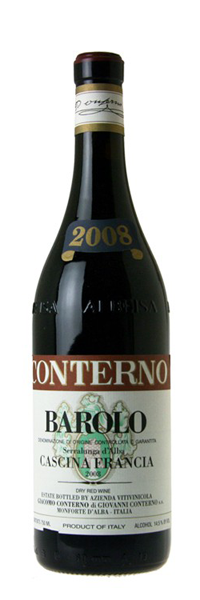NADA FIORENZO Barbaresco Montaribaldi 2019
The cellar NADA FIORENZO
The cellar is the place where millenary traditions, new know-how, taste and the little secrets of every winegrower all come together.
Our experience is the fruit of skills that have been handed down to us, of a great many grape harvests and of the odd poetic licence based on personal taste.
The cellar is situated by our house in Rombone. It is here that the bunches of grapes, all our own and the fruit of months and months of care and attention in the vineyard, end up after being hand-picked and piled into crates. It is the beginning of a long journey.
Soft crushing is followed by maceration and primary fermentation with the grape skins and grapeseeds, which converts the sugars into alcohol. The operation is performed in vats at controlled temperatures using traditional methods such as pumping over and plunging.
Then comes secondary fermentation, the conversion of hard malic acid into softer lactic acid in vats.
The new wine is then aged in barrels, where it softens its rough edges. This means a short period of time for fresh-tasting wines, but much longer, up to two years, for Barbarescos.
Bottling, finally, involves a few months in the underground cellar, where the wine seeks out its own harmony.
When, at last, the moment comes to present new vintages, the bottles are labelled and begin to appear on local wine lists or depart for far-off destinations.
The cellar is situated by our house in Rombone. It is here that the bunches of grapes, all our own and the fruit of months and months of care and attention in the vineyard, end up after being hand-picked and piled into crates. It is the beginning of a long journey.
Soft crushing is followed by maceration and primary fermentation with the grape skins and grapeseeds, which converts the sugars into alcohol. The operation is performed in vats at controlled temperatures using traditional methods such as pumping over and plunging.
Then comes secondary fermentation, the conversion of hard malic acid into softer lactic acid in vats.
The new wine is then aged in barrels, where it softens its rough edges. This means a short period of time for fresh-tasting wines, but much longer, up to two years, for Barbarescos.
Bottling, finally, involves a few months in the underground cellar, where the wine seeks out its own harmony.
When, at last, the moment comes to present new vintages, the bottles are labelled and begin to appear on local wine lists or depart for far-off destinations.
Barbaresco Montaribaldi
Made with nebbiolo grapes from the old vines that cling to the highly eroded soil of a steep vineyard in Cascina Quinto, heart of Montaribaldi. A very rich bright garnet red Barbaresco with a vinous nose and a soft, complex palate.
Already harmonious when young, it is capable of long aging in the cellar. Like the other Barbarescos, it should be suitably oxygenated before being drunk, ideally with pasta with meat sauce, roast and braised beef and veal, and hard and mature cheeses.
Local match: “Coniglio al civet” Rabbit marinated in wine with herbs
Contiene solfiti







Reviews
There are no reviews yet.